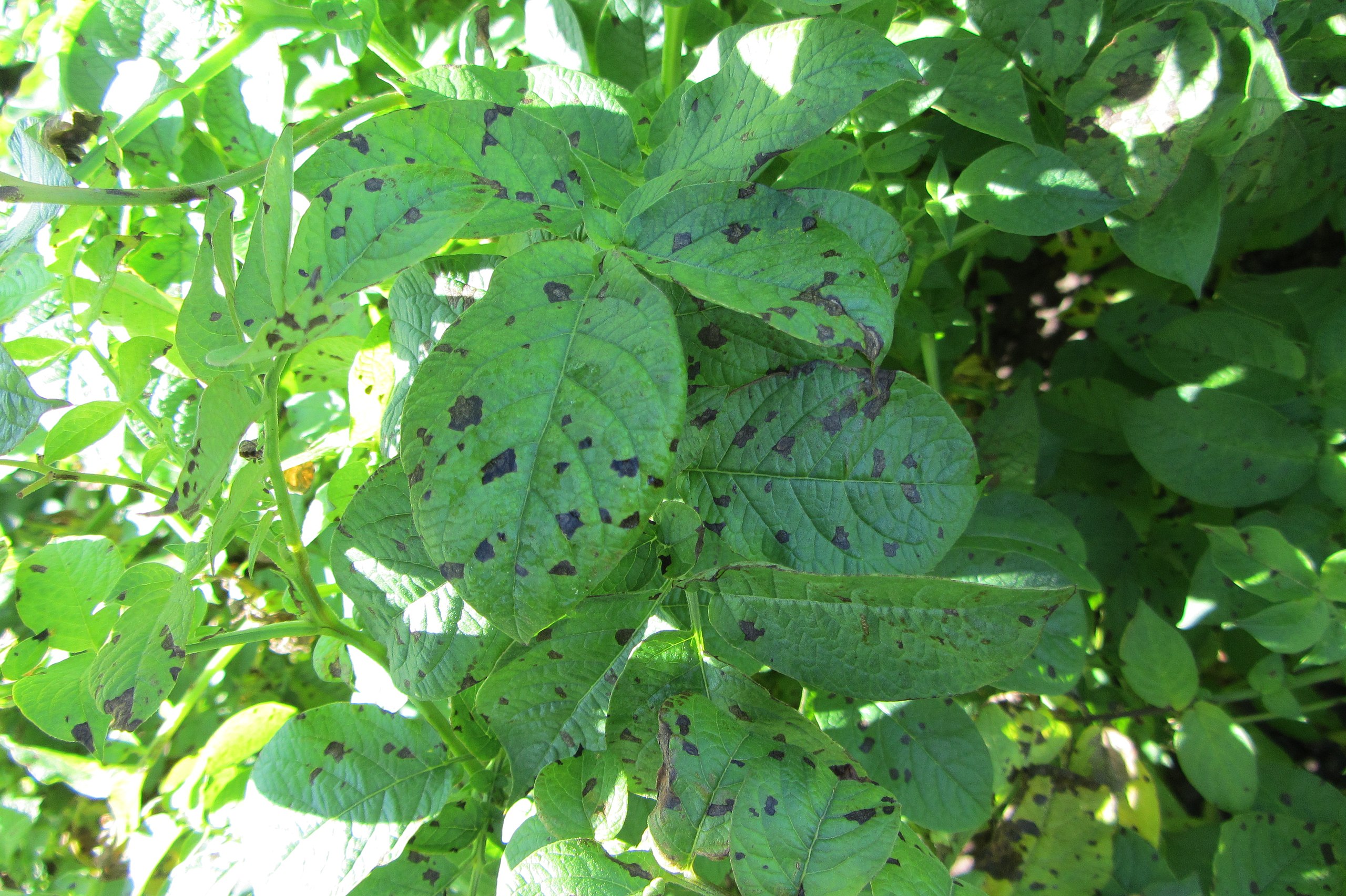
Early blight
Alternaria solani
What is Early blight (Alternaria solani)?
Early blight (Alternaria solani) is a fungal disease that affects tomatoes and potato plants. It is distributed worldwide and occurs wherever these crops are grown. Symptoms include small black or brown leaf lesions, which enlarge and develop a yellow halo. Larger lesions have concentric rings, giving them a "bullseye" appearance. Infected fruit and tubers show sunken lesions with concentric rings. Warm and humid environmental conditions favor infection. Early blight can cause defoliation, reduced fruit size, and yield loss, making it economically significant for growers.
How does Early blight (Alternaria solani) occur?
Early blight reproduces primarily through asexual spores called conidia, produced by the fungus Alternaria solani. The conidia are dispersed through wind and splashing rain or irrigation. The fungus overwinters on infected crop debris and can survive in the soil for several years. Under favorable environmental conditions, such as warm temperatures and moisture, the conidia germinate and infect plant tissues through direct penetration or stomata. The disease cycle repeats with new infections, leading to the spread and progression of early blight in crops.
Symptoms
1 - Plant Health
• Alternaria solani, a fungal pathogen, negatively impacts plants. Infected crops yield smaller and lower-quality fruits, causing economic losses. • Collar rot weakens or kills seedlings, while potato tubers develop lesions, reducing quality. Defoliation decreases photosynthesis, leading to reduced yields.
2 - Soil Effects
Alternaria solani has significant impacts on soil. The fungus survives in soil through infected debris, increasing the risk of disease. Severe infections deplete soil organic matter and nutrients, negatively affecting fertility.
Solutions
1 - Cultural Practices
• Remove infected plant debris and practice field sanitation to minimize the presence of fungal spores. • Control weeds and volunteers, as they can serve as reservoirs for the disease. • Use disease-free seeds or transplants to prevent the introduction of the pathogen. • Rotate crops with non-susceptible hosts to disrupt the disease cycle and reduce the build-up of fungal populations. • Optimize tuber maturity and handle them carefully during harvest to minimize the risk of infection and lesion development. • Maintain good soil fertility levels, as healthy plants are more resistant to diseases, including Alternaria solani.
2 - Resistant cultivars
• Resistant cultivars for early blight. • Consult with local agricultural extension services or nurseries for more information on resistant cultivars suitable for your specific area.
3 - Biological control
• Biological control options for early blight include beneficial bacteria like Bacillus subtilis, fungi such as Trichoderma spp., and biofungicides like Serenade (Bacillus subtilis strain QST 713). • It is essential to follow product instructions and consult with local experts.
4 - Chemical Control
• Available fungicides for early blight include protectant fungicides like mancozeb and chlorothalonil, as well as quinone outside inhibitors (QoIs) such as azoxystrobin and pyraclostrobin. • Succinate dehydrogenase inhibitors (SDHIs) like fluxapyroxad and fluopyram are also effective against early blight.
